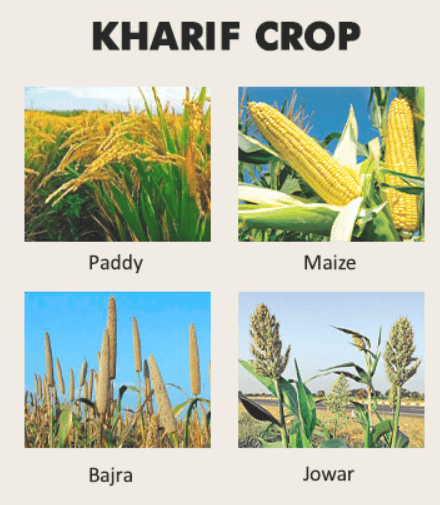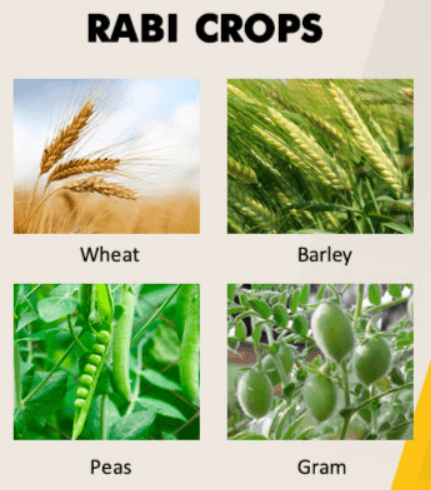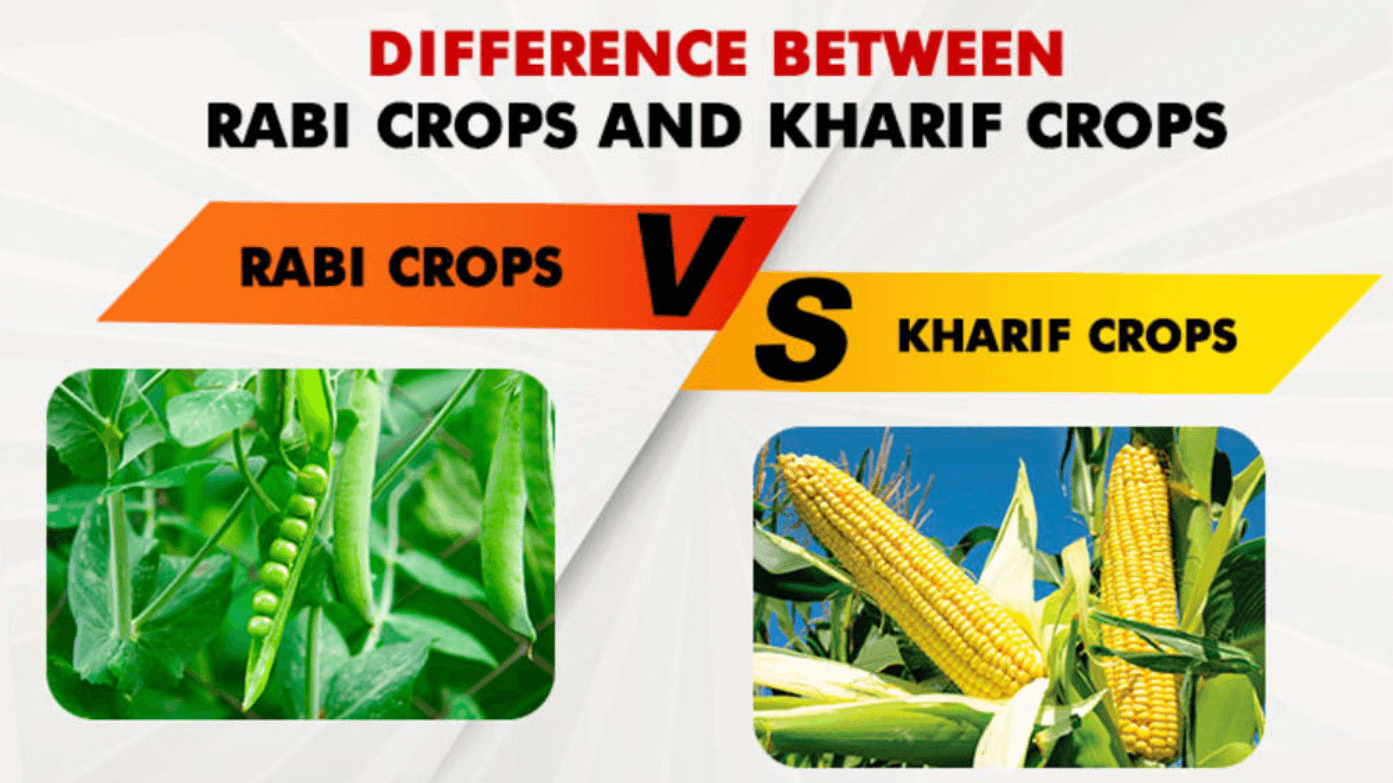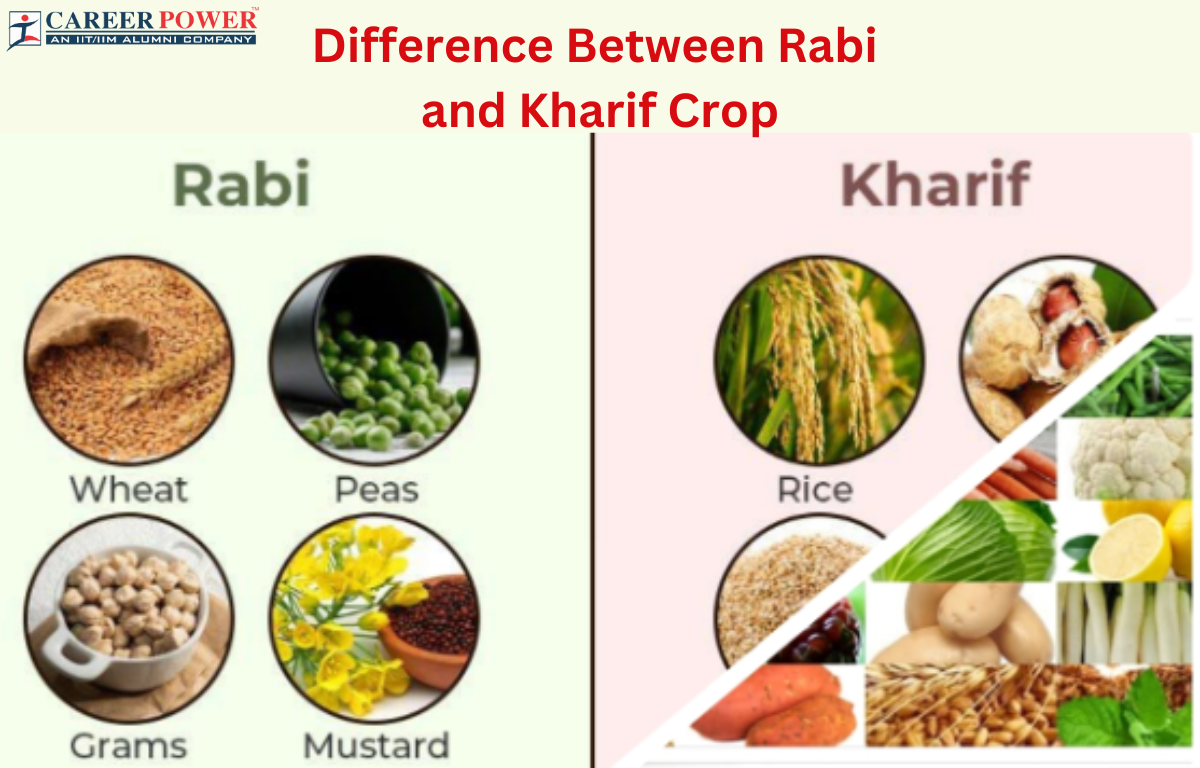Crops are plants that are cultivated and grown by humans for various purposes, such as food, fiber, medicine, or ornamental uses. They include a wider range of plants like grains (wheat, rice, corn), fruits (apples, oranges), vegetables (tomatoes, carrots), and more. Crops are essential for sustaining human populations and are cultivated through agricultural practices.
In India, crops are primarily classified into two categories based on their growing seasons: Rabi and Kharif Crops. This classification helps in planning agricultural activities and resource management based on the availability of water and climatic conditions during these two distinct seasons.
Rabi and Kharif Crops
Rabi and Kharif are two major crop types in India. Rabi crops are planted and harvested during cooler months when the temperature is lower. Common Rabi crops include wheat, barley, and peas. On the other hand, Kharif crops grow in warmer and wetter conditions when there is plenty of rain. Examples of Kharif crops are rice, maize, and cotton. The key difference between these crops is the weather they require to grow. Rabi crops need cooler, drier conditions, while Kharif crops thrive in warmer, rainier climates, which makes them suitable for different times of the year.
What are Kharif Crops?
Kharif crops are sown during the rainy season, which typically starts in June and extends to September. Kharif crops are dependent on the monsoon rains for their growth and development. Examples of Kharif crops include rice, maize, millet, cotton, soybean, and groundnut.

What are Rabi Crops?
Rabi crops are sown during the winter season, usually from October to December, and harvested in the Spring. Rabi crops rely on irrigation and cooler weather conditions for their growth. Examples of Rabi crops include wheat, barley, mustard, chickpea (gram), and linseed.

Difference Between Kharif and Rabi Crops
Rabi and Kharif are two distinct cropping seasons in India, which are determined by the monsoon patterns and climatic conditions. Rabi crops are sown in the winter season, between October and December, and are harvested in the spring, between April and June. Examples include wheat, barley, peas, and mustard. Kharif Crops, on the other hand, are sown during the monsoon season, between June and July, and are harvested between September and October.

The key differences between the two lie in their planting and harvesting times, which are determined by the monsoon cycles and climate conditions of the region.
| Difference Between Rabi and Kharif Crops | ||
| Aspects | Rabi Crops | Kharif Crops |
| Sowing Time | The Rabi crops are sown in the winter season, between October to December. | The Kharif crops are sown in the summer season, between June to July. |
| Harvesting Time | These crops are harvested between April to June. | These crops are harvested between September to October. |
| Main Crops | The main Rabi crops are wheat, barley, peas, mustard, etc. | The main Kharif crops are rice, maize, cotton, soybeans, etc. |
| Rainfall Dependency | These crops are less dependent on monsoon rainfall. | These crops are heavily dependent on monsoon rainfall. |
| Growing Season | These crops are grown in the Winter season. | These crops are grown in the Summer season. |
| Climatic Conditions | These crops need cooler temperatures. | These crops need warmer temperatures. |
| Examples | Examples of Rabi crops are wheat, barley, mustard, chickpea, etc. | Examples of Kharif crops are rice, maize, cotton, sorghum, etc. |
Advantages of Kharif and Rabi Crops
The advantages of each cropping season are based on the specific conditions and requirements of the crops grown during that time, which contribute to the overall agricultural productivity in India.
Advantages of Rabi Crops
- Favorable Weather: Rabi crops are sown in winter and harvested in spring. The weather during this season is usually dry and cool, reducing the risk of pests and diseases.
- Sufficient Irrigation: Rabi crops benefit from soil moisture retained from the monsoon season, reducing the need for excessive irrigation.
- Higher Yield Potential: Cooler temperatures and longer growing periods can lead to better yields for certain crops like wheat, barley, and mustard.
- Crop Rotation: Rabi crops provide an opportunity for crop rotation, which helps in maintaining soil fertility and controlling pests.
- Stable Prices: Since Rabi crops are harvested in spring when the supply of grains is generally lower, they tend to fetch better prices in the market.
Advantages of Kharif Crops
- Monsoon Rainfall: Kharif crops are sown during the rainy season, making use of an abundant water supply. This reduces the need for artificial irrigation.
- Diverse Crop Variety: The Kharif season supports the cultivation of various crops like rice, maize, cotton, and sugarcane, providing diversity in the agricultural sector.
- Longer Growing Season: Longer daylight hours and warmer temperatures contribute to the rapid growth of crops like rice and millet.
- Higher Nutrient Content: Some Kharif crops have higher nutrient content due to the availability of ample water and sunlight.
- Boosting Livestocks: The availability of fodder from kharif crops benefits livestock farming during this season.



 50 Vegetables Name for Kids in English a...
50 Vegetables Name for Kids in English a...
 Food Chain: Definition, Types, Examples,...
Food Chain: Definition, Types, Examples,...
 Human Respiratory System: Definition, Di...
Human Respiratory System: Definition, Di...













